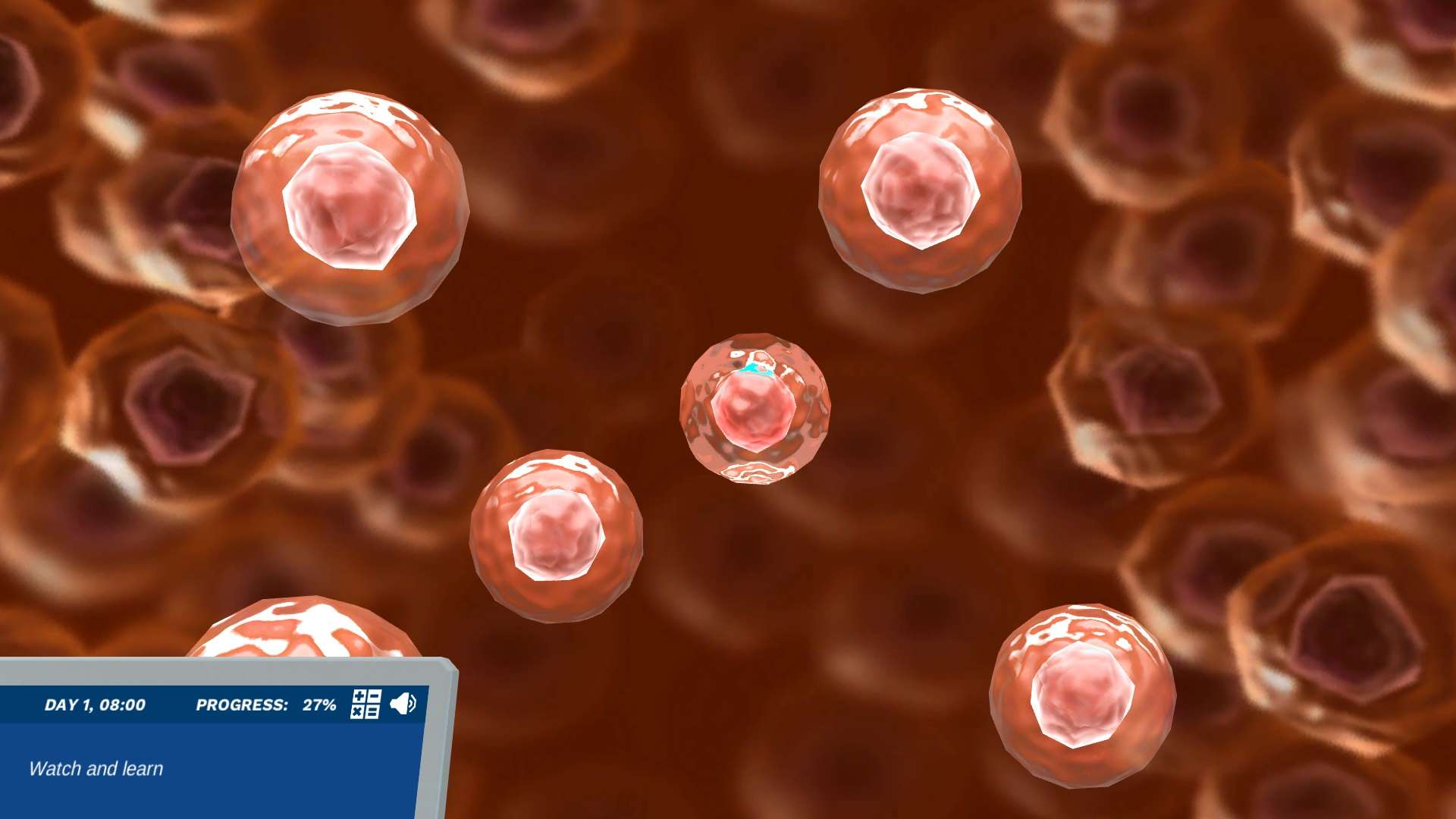Heading 1
Heading 2
Heading 3
Heading 4
Heading 5
Heading 6
Lorem ipsum dolor sit amet, consectetur adipiscing elit, sed do eiusmod tempor incididunt ut labore et dolore magna aliqua. Ut enim ad minim veniam, quis nostrud exercitation ullamco laboris nisi ut aliquip ex ea commodo consequat. Duis aute irure dolor in reprehenderit in voluptate velit esse cillum dolore eu fugiat nulla pariatur.
Block quote
Ordered list
- Item 1
- Item 2
- Item 3
Unordered list
- Item A
- Item B
- Item C
Bold text
Emphasis
Superscript
Subscript
About This Simulation
Investigate the principles of cancer development and cancer-related gene mutations to assess the risk of breast cancer development in a patient with a history of cancer in the family.
Learning Objectives
- Relate BRCA1 and BRCA2 mutations to the genetic events that lead to cancer development
- Describe the role of oncogenes and tumor suppressor proteins in cancer
About This Simulation
Lab Techniques
Related Standards
- Early Stage Bachelors Level
- EHEA First Cycle
- Intermediate Stage Bachelors Level
- US College Year 3
- US College Year 4
- US College Year 5
- US College Year 6
- Biology Unit 6.7
Learn More About This Simulation
This short, targeted simulation is adapted from the full-length “Medical genetics” simulation.
Our cells have a very powerful system of checkpoints and alarm mechanisms to prevent serious mutations. But sometimes these mechanisms fail. In this simulation, you will learn about cancer and genes related to breast cancer development. Will you manage to help our patient and assess her risk of breast cancer development?
Learn the principles cancer development
Begin by reviewing some basic facts about cancer and its development. You will learn how gene mutations influence cells and lead to their uncontrolled growth into cancerous cells. Discover the difference between proto-oncogenes and tumor suppressor genes. What are their roles in cancer development? Find out how cancer can be heritable.
Discover the influence of BRCA genes on breast cancer
BRCA genes strongly relate to breast cancer development. They account for up to 10% of all breast cancer cases. Discover their role in cell regulation and explain why mutations in these genes can be passed on biological children, increasing the risk of breast cancer in future generations.
Assess the risk of cancer development in Rosa
The knowledge gained throughout the simulation will help you assess the risk of breast cancer development in our patient - Rosa. Study family pedigree and results of gene analysis and draw conclusions on the nature of cancer and possibility that Rosa will have it in the future.
For Science Programs Providing a Learning Advantage
Boost STEM Pass Rates
Boost Learning with Fun
75% of students show high engagement and improved grades with Labster
Discover Simulations That Match Your Syllabus
Easily bolster your learning objectives with relevant, interactive content
Place Students in the Shoes of Real Scientists
Practice a lab procedure or visualize theory through narrative-driven scenarios


FAQs
Find answers to frequently asked questions.
Heading 1
Heading 2
Heading 3
Heading 4
Heading 5
Heading 6
Lorem ipsum dolor sit amet, consectetur adipiscing elit, sed do eiusmod tempor incididunt ut labore et dolore magna aliqua. Ut enim ad minim veniam, quis nostrud exercitation ullamco laboris nisi ut aliquip ex ea commodo consequat. Duis aute irure dolor in reprehenderit in voluptate velit esse cillum dolore eu fugiat nulla pariatur.
Block quote
Ordered list
- Item 1
- Item 2
- Item 3
Unordered list
- Item A
- Item B
- Item C
Bold text
Emphasis
Superscript
Subscript
A Labster virtual lab is an interactive, multimedia assignment that students access right from their computers. Many Labster virtual labs prepare students for success in college by introducing foundational knowledge using multimedia visualizations that make it easier to understand complex concepts. Other Labster virtual labs prepare learners for careers in STEM labs by giving them realistic practice on lab techniques and procedures.
Labster’s virtual lab simulations are created by scientists and designed to maximize engagement and interactivity. Unlike watching a video or reading a textbook, Labster virtual labs are interactive. To make progress, students must think critically and solve a real-world problem. We believe that learning by doing makes STEM stick.
Yes, Labster is compatible with all major LMS (Learning Management Systems) including Blackboard, Canvas, D2L, Moodle, and many others. Students can access Labster like any other assignment. If your institution does not choose an LMS integration, students will log into Labster’s Course Manager once they have an account created. Your institution will decide which is the best access method.
Labster is available for purchase by instructors, faculty, and administrators at education institutions. Purchasing our starter package, Labster Explorer, can be done using a credit card if you are located in the USA, Canada, or Mexico. If you are outside of North America or are choosing a higher plan, please speak with a Labster sales representative. Compare plans.
Labster supports a wide range of STEM courses at the high school, college, and university level across fields in biology, chemistry, physics, and health sciences. You can identify topics for your courses by searching our Content Catalog.















